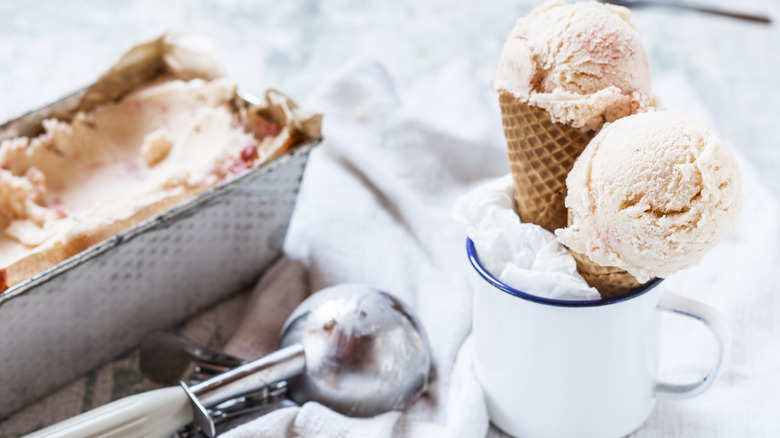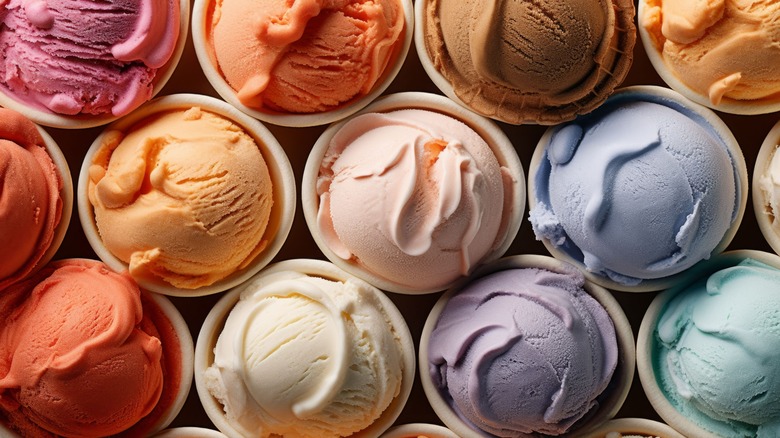Yes, There Is A Correct Way To Store Your Homemade Ice Cream
Regardless of the flavor, homemade ice cream is sure to wow. Its fresh taste and fluffy texture easily render the treat lovable, but its pared-down ingredient list skyrockets the ice cream's appeal. However, in the absence of additives and stabilizers made-from-scratch pints can degrade at a faster rate, especially if ice cream isn't stored properly. To guarantee that every scoop is as delicious as the first it's important to know how to store ice cream.
Quality is at stake when homemade ice cream isn't kept under the right conditions. Whether it's due to poor packaging or the result of continually thawing and refreezing, ice cream can become freezer burned, which can dull flavors, lessen aesthetics, and cause gritty textures. That said, safety can also be impacted should the perishable treat be subject to melt-worthy temperatures. Evidently, proper storage isn't just recommend, it's essential.
First and foremost, always transfer homemade ice cream into an airtight container. Plastic options with shallow yet spacious dimensions are most ideal as the material, coupled with the sizable surface area, allows for fast freezing. Plus, flat containers also make stacking and scooping more effortless. Once filled (and gently patted down to avoid air bubbles), cover the ice cream with wax paper to prevent leaching aromas and limit the formation of crunchy ice crystals. Then, simply place the container in the lower bottom section of your freezer to keep freshly made ice cream at its frostiest.
For better tasting ice cream, storage matters
Proper storage maintains the integrity of homemade ice cream and extend its shelf life. But, correct storage doesn't end with where you keep the made-from-scratch delight. Handling must be considered as well. Since ice cream should be kept at a cold and constant temperature from the moment it's churned until it reaches your cone, we suggest chilling tools and containers before they come into contact with the custard. In fact, a cool work zone and a frosty storage space — freezers should be set below 0° Fahrenheit — can also preserve the ice cream's composition. To further minimize fluctuations in temperature, even practices like keeping freezer doors shut and returning ice cream to its place shortly after serving can reduce the risk of the dreaded melt-and-refreeze.
Despite your best efforts, perfectly handled and stored ice cream won't last forever. While exact timelines will vary, homemade ice cream should be enjoyed sooner rather than later, which is why we advise polishing off containers within a couple of weeks. Yet, that isn't to say that the ice cream won't keep for as long as 3 months under the right conditions. Just remember to look out for signs of degradation as time passes. Any changes in color, texture, or smell can signal that it's time to toss the container, prompting you to get started on a newer, fresher batch of ice cream.

